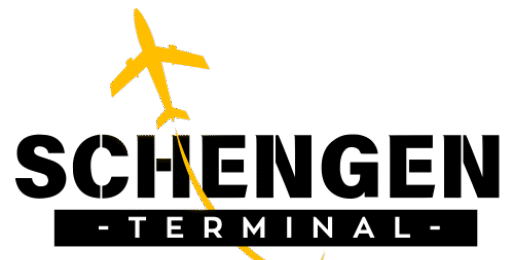The Complete Guide to the Schengen Area
The Complete Guide to the Schengen Area: Everything You Need to Know in 2025
Introduction: Understanding the Schengen Zone
The Schengen Area represents one of Europe’s most significant achievements in international cooperation and freedom of movement. Named after the small Luxembourg village where the original agreement was signed in 1985, this passport-free zone has revolutionized travel across Europe for millions of people worldwide.
Whether you’re planning your first European adventure, considering relocating within Europe, or simply curious about this remarkable international agreement, this comprehensive guide will provide you with everything you need to know about the Schengen Area in 2025.
What is the Schengen Area?
The Schengen Area is a zone comprising 29 European countries that have officially abolished passport and immigration controls at their mutual borders. This means that once you enter any Schengen country, you can travel freely between all member states without showing your passport at internal borders.
The area operates as a single jurisdiction for international travel purposes, with a common visa policy that allows visitors to travel throughout the zone with a single visa. This system has created the world’s largest free travel area, covering over 4 million square kilometers and serving more than 400 million people.
Key Features of the Schengen Zone
The Schengen system is built on several fundamental principles:
Free Movement of People: Citizens of Schengen countries can live, work, and travel freely within the area without border checks.
Common Visa Policy: Non-EU visitors can obtain a single Schengen visa that allows travel to all member countries.
Coordinated Border Control: External borders are managed according to common standards and procedures.
Enhanced Security Cooperation: Member countries share information and coordinate security efforts through various databases and systems.
Complete List of Schengen Countries in 2025
Understanding which countries are part of the Schengen Area is crucial for travel planning. The area includes both European Union member states and some non-EU countries.
EU Member States in Schengen
The following 25 European Union countries are full members of the Schengen Area:
- Austria
- Belgium
- Bulgaria
- Croatia (joined in 2023)
- Czech Republic
- Denmark
- Estonia
- Finland
- France
- Germany
- Greece
- Hungary
- Italy
- Latvia
- Lithuania
- Luxembourg
- Malta
- Netherlands
- Poland
- Portugal
- Romania
- Slovakia
- Slovenia
- Spain
- Sweden
Non-EU Schengen Members
Four countries that are not EU members have joined the Schengen Area:
- Iceland: Joined through the Nordic Passport Union agreement
- Liechtenstein: Small Alpine principality between Austria and Switzerland
- Norway: Member through the Nordic agreement despite not being in the EU
- Switzerland: Joined in 2008 through bilateral agreements with the EU
Special Cases and Territories
Several territories have special arrangements:
Monaco: While not officially a Schengen member, it maintains open borders with France and follows Schengen rules in practice.
San Marino and Vatican City: These microstates have open borders with Italy and follow Schengen procedures.
French Overseas Territories: Most French overseas departments and territories are not part of the Schengen Area, requiring separate entry procedures.
Notable Non-Members
Several European countries remain outside the Schengen Area:
United Kingdom: Never joined Schengen and maintained border controls even as an EU member. Post-Brexit, it remains outside the system.
Ireland: Maintains border controls and issues its own visas, though it has some cooperation agreements with the UK.
Cyprus: EU member but not part of Schengen due to the ongoing division of the island.
History and Evolution of the Schengen Agreement
The Origins (1985-1995)
The Schengen Agreement began as an ambitious experiment in European integration. On June 14, 1985, five countries – Belgium, France, Luxembourg, the Netherlands, and West Germany – signed the original Schengen Agreement in the village of Schengen, Luxembourg.
The agreement aimed to gradually eliminate border checks between participating countries while strengthening external border controls. However, it took a decade of negotiations and preparations before the system became operational.
Implementation and Early Years (1995-2000)
The Schengen Agreement finally came into effect on March 26, 1995, initially covering seven countries after Italy and Spain joined during the implementation phase. Portugal followed shortly after, and the system began to demonstrate its potential for facilitating free movement across Europe.
During these early years, the focus was on establishing common standards for border control, visa policies, and information sharing systems that would ensure security while enabling free movement.
Integration with EU Law (1999-2007)
A major milestone came in 1999 when the Treaty of Amsterdam integrated the Schengen Agreement into European Union law. This integration made Schengen participation a requirement for new EU members, subject to meeting specific criteria related to border control and security.
The period also saw significant expansion, with Nordic countries (Denmark, Finland, Iceland, Norway, and Sweden) joining in 2001, followed by most new EU member states after 2004.
Modern Developments (2008-Present)
The most recent significant expansion occurred in December 2008, when nine new countries joined: Czech Republic, Estonia, Hungary, Latvia, Lithuania, Malta, Poland, Slovakia, and Slovenia. Switzerland joined the same year through bilateral agreements.
Croatia became the newest member in 2023, marking the latest expansion of the Schengen Area. The system has also evolved to include enhanced security measures, improved information sharing systems, and coordinated responses to migration challenges.
How the Schengen Visa System Works
Understanding Schengen Visas
The Schengen visa system allows visitors from non-Schengen countries to travel throughout the area with a single visa. This uniform visa policy represents one of the system’s greatest conveniences for international travelers.
Types of Schengen Visas
Short-Stay Visas (Type C): The most common type, allowing stays of up to 90 days within any 180-day period. These are suitable for tourism, business visits, or short-term studies.
Airport Transit Visas (Type A): Required by citizens of certain countries when transiting through Schengen airports, even without entering the country.
Long-Stay Visas (Type D): National visas issued by individual countries for stays longer than 90 days, such as work, study, or family reunification.
Check official page: Official EU Schengen Visa Policy
The 90/180 Rule
One of the most important aspects of the Schengen system is the 90/180 rule. This means that visitors can stay in the Schengen Area for a maximum of 90 days within any rolling 180-day period. This rule applies to:
- Visa-free travelers from countries with visa waiver agreements
- Holders of short-stay Schengen visas
- All non-EU citizens without residence permits
Understanding this rule is crucial for avoiding overstays, which can result in fines, deportation, and future entry bans.
Visa Application Process
Applying for a Schengen visa involves several steps:
Determine the Responsible Country: Apply to the country that is your main destination or, if visiting multiple countries equally, the country of first entry.
Gather Required Documents: This typically includes a completed application form, passport photos, travel insurance, proof of accommodation, flight reservations, and financial means.
Schedule an Appointment: Most countries require appointments at consulates or visa application centers.
Attend the Appointment: Submit documents, provide biometric data, and pay the visa fee.
Wait for Processing: Standard processing time is 15 calendar days, though it can be extended to 30 or even 60 days in exceptional cases.
Travel Benefits and Advantages
Seamless Border Crossings
The most obvious benefit of the Schengen Area is the ability to cross borders without passport checks. This creates a travel experience similar to moving between states in the United States or provinces in Canada, making multi-country European trips remarkably convenient.
Travelers can drive from Portugal to Poland, take trains from Spain to Sweden, or fly from Italy to Iceland without experiencing traditional border formalities at internal boundaries.
Cost and Time Savings
The elimination of border checks saves significant time and money for travelers. Benefits include:
Reduced Travel Time: No queues at internal borders means faster journey times, especially important for business travelers and daily commuters.
Lower Administrative Costs: One visa instead of multiple visas reduces both fees and bureaucratic burden.
Flexible Itinerary Planning: Travelers can change their routes and destinations without additional visa requirements.
Enhanced Tourism: The ease of multi-country travel has boosted tourism throughout Europe, with many visitors exploring multiple destinations in a single trip.
Economic Impact
The Schengen Area has generated substantial economic benefits:
Increased Trade: Simplified border procedures facilitate commerce and reduce transportation costs for businesses.
Labor Mobility: Workers can easily move between countries to find employment, helping to balance labor markets across Europe.
Tourism Growth: Multi-destination tourism has flourished, contributing billions of euros to European economies.
Business Efficiency: Companies can operate across borders more efficiently, leading to increased productivity and competitiveness.
Current Challenges and Limitations
Security Concerns
While the Schengen system has brought many benefits, it has also faced significant security challenges:
Terrorism Threats: High-profile terrorist attacks in Paris, Brussels, and other European cities have raised questions about border security within the Schengen Area.
Information Sharing: Despite improved systems, coordination between national security agencies remains imperfect.
External Border Security: The effectiveness of external border controls directly impacts the security of the entire area.
Migration and Refugee Crisis
The 2015 European refugee crisis highlighted several weaknesses in the Schengen system:
Burden Sharing: Countries at external borders bore disproportionate responsibility for processing asylum seekers.
Secondary Movement: Once in the Schengen Area, asylum seekers could move freely to their preferred destinations, creating distribution challenges.
Dublin Regulation: The system for determining which country is responsible for asylum claims proved inadequate during the crisis.
Temporary Border Controls
Several countries have reintroduced temporary border controls in response to various challenges:
Germany: Implemented controls at its Austrian border starting in 2015 due to migration concerns.
France: Has maintained border controls since 2015 due to terrorist threats and major events.
Denmark: Introduced controls at its German border in 2016, primarily citing migration and security concerns.
Austria: Maintains controls at several borders due to migration and security issues.
These temporary measures, while legally permitted under Schengen rules, have raised questions about the long-term viability of completely open borders.
COVID-19 Impact
The coronavirus pandemic severely tested the Schengen system:
Border Closures: Many countries unilaterally closed borders or imposed restrictions on movement.
Health Certificates: Requirements for health passes and vaccination certificates created new barriers to free movement.
Coordination Challenges: The lack of coordinated response highlighted weaknesses in crisis management within the system.
Recent Developments and Future Outlook
Digital Transformation
The Schengen Area is undergoing significant digital modernization:
European Travel Information and Authorization System (ETIAS): Expected to launch in 2024, this system will require visa-exempt travelers to obtain electronic authorization before visiting the Schengen Area.
Entry/Exit System (EES): This automated system will register entries and exits of non-EU nationals, replacing manual passport stamping.
Interoperability of Information Systems: EU agencies are working to connect various databases to improve information sharing and security.
Expansion Prospects
Several countries are in various stages of joining the Schengen Area:
Croatia: Successfully joined in 2023, demonstrating that expansion remains possible.
Cyprus: Membership remains complicated by the ongoing division of the island.
Western Balkans: Countries like Albania, North Macedonia, and Serbia have expressed interest in future membership as part of EU accession processes.
Reform Initiatives
The European Union is considering various reforms to address current challenges:
Schengen Governance: Proposals for stronger EU oversight of border management and clearer rules for temporary border controls.
External Border Security: Enhanced cooperation with neighboring countries and improved technology for border monitoring.
Crisis Management: Better coordination mechanisms for responding to migration, health, or security crises.
Legal Framework Updates: Modernizing legislation to address new challenges while preserving free movement principles.
Practical Travel Tips for the Schengen Area
Before You Travel
Check Visa Requirements: Verify whether you need a visa and ensure it covers all countries you plan to visit. So check here Schengen visa requirements in detail.
Travel Insurance: Schengen visas require travel insurance with minimum coverage of €30,000 for medical expenses.
Document Preparation: Always carry your passport, even when traveling between Schengen countries, as it may be required for hotel check-ins or other services.
Plan Your Route: Understand the 90/180 rule if you’re making multiple trips to Europe.
During Your Stay
Keep Track of Days: Monitor your stay duration to avoid overstaying the 90-day limit.
Carry Important Documents: While internal border checks are rare, police can still conduct document checks.
Understand Local Laws: Each country maintains its own laws and regulations despite open borders.
Emergency Contacts: Know how to contact emergency services in each country you visit.
Border Crossing Tips
Internal Borders: While checks are uncommon, be prepared to show identification if requested.
External Borders: Expect thorough checks when entering or leaving the Schengen Area.
Documentation: Keep all travel documents organized and easily accessible.
Declaration Requirements: Be aware of customs regulations, which still apply between countries.
Economic and Social Impact
Economic Benefits
The Schengen Area has generated substantial economic advantages across Europe:
GDP Growth: Studies estimate that the Schengen Agreement contributes between 0.2% and 0.4% to annual GDP growth in participating countries.
Trade Facilitation: Reduced border costs and delays have increased trade volumes between member countries by an estimated 10-20%.
Tourism Revenue: The ease of multi-country travel has significantly boosted tourism, with cross-border tourism increasing by approximately 30% since implementation.
Labor Market Integration: Worker mobility has improved labor market efficiency and reduced unemployment disparities between regions.
Social and Cultural Benefits
Beyond economic impacts, Schengen has fostered European integration:
Cultural Exchange: Easier travel has facilitated cultural exchange and understanding between European peoples.
Educational Opportunities: Student exchange programs like Erasmus have benefited from simplified travel procedures.
Family Connections: Cross-border families can maintain closer relationships without bureaucratic barriers.
European Identity: Free movement has contributed to the development of a shared European identity and values.
Challenges for Non-EU Citizens
While EU citizens enjoy full benefits, non-EU citizens face various restrictions:
Work Limitations: Tourist visas don’t permit employment, even for short-term work.
Study Restrictions: Educational activities may require specific visas depending on duration and type.
Healthcare Access: Limited access to healthcare services without proper insurance or residence permits.
Long-term Planning: The 90/180 rule complicates long-term travel or residence plans for non-EU citizens.
Technology and Security Measures
Information Systems
The Schengen Area relies on sophisticated information systems:
Schengen Information System (SIS II): The primary database for alerts on persons and objects, accessible to border guards, police, and customs authorities.
Visa Information System (VIS): Stores visa application data and biometric information for all Schengen visa applicants.
Eurodac: Database containing fingerprints of asylum seekers and irregular border crossers.
Biometric Technology
Modern border control increasingly relies on biometric systems:
Automated Border Control (ABC) Gates: These systems use biometric data to speed up border crossings for eligible travelers.
Facial Recognition: Advanced systems can identify individuals and cross-reference them with security databases.
Fingerprint Scanning: Standard procedure for visa applications and increasingly used at border crossings.
Future Technology Integration
Upcoming technological developments include:
Artificial Intelligence: AI systems will enhance risk assessment and threat detection capabilities.
Blockchain Technology: Potential applications in secure document verification and information sharing.
Mobile Integration: Smartphone apps for border procedures and travel authorization.
Conclusion: The Future of Free Movement in Europe
The Schengen Area remains one of the European Union’s most visible and successful achievements, demonstrating how international cooperation can create tangible benefits for millions of people. Despite facing significant challenges from security threats, migration pressures, and recent health crises, the system has shown remarkable resilience and adaptability.
As we look toward the future, the Schengen Area continues to evolve. Digital transformation initiatives like ETIAS and EES promise to enhance both security and convenience. While some countries have implemented temporary border controls, the fundamental principle of free movement remains strong, with new members like Croatia joining as recently as 2023.
For travelers, the Schengen Area offers unparalleled convenience and opportunities for exploration across Europe’s diverse cultures, landscapes, and histories. Understanding the rules, benefits, and current developments helps ensure smooth travels while appreciating the remarkable achievement that this passport-free zone represents.
The success of the Schengen Area has inspired similar initiatives worldwide, proving that international cooperation and shared sovereignty can deliver concrete benefits while maintaining security and national identity. As Europe continues to face new challenges and opportunities, the Schengen system will undoubtedly continue to adapt and evolve, maintaining its position as a model for regional integration and free movement.
Whether you’re planning a European vacation, considering business opportunities across the continent, or simply interested in this remarkable example of international cooperation, the Schengen Area represents much more than just convenient travel – it embodies the European ideal of unity in diversity, where borders exist on maps but not in the daily lives of hundreds of millions of people.
This comprehensive guide to the Schengen Area provides essential information for travelers, residents, and anyone interested in European integration. As policies and regulations continue to evolve, always check official government sources for the most current travel requirements and restrictions before planning your journey.




